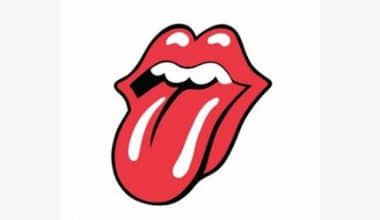The Latin phrase “VERITAS” is written in three volumes and appears on a shield as the Harvard University logo. In 1692, Harvard adopted the Latin phrase “Veritas Christo et Ecclesiae,” which means “Truth for the Church and Christ.” This motto, which was written on a shield, is on many buildings on the main campus. They are the Memorial Church, Widener Library, and a number of dorms in Harvard Yard. This article will explain everything there is to know about Harvard, including its logo, history, symbols, and evolutions.
How It Began
Harvard University came into existence in 1636 and is the oldest college or university in the U.S. The Ivy League institution is among the most esteemed in the nation. The main campus is in Cambridge, Massachusetts, along the Charles River. It is several miles west of Boston’s financial sector and has about 23,000 students enrolled in it overall.
Surprisingly, the lower book faces down while the two larger volumes on the Harvard shield face up. This shows the need for a message from God and the limits of what people can figure out on their own. The current shield now simply bears the name “Veritas” and three open books because the school has been secularized.
Read CHRYSLER BRAND: History, Facts & Evolution of Chrysler Logo
Harvard’s Official Seal
Each of the 12 Harvard undergraduate houses has its own shield in addition to the university’s official symbol. The shields stand for a noteworthy characteristic of each house.
For instance, the “Radcliffe Apple Tree” seen on the Currier House shield represents the source of Currier House’s sponsorship. The coats of arms representing the Lowell and Eliot houses are visible on their shields, respectively, while the Pforzheimer house shield combines the colors of Radcliffe and Harvard’s crimson and black.
Evolution of the Harvard Logo
Only at its bicentennial in 1836 was the Harvard logo’s original shield image released. The shield as we know it now first appeared on campus buildings at this time. In September of that year, Harvard President John Quincy came up with the coat of arms, which was a part of the university’s celebrations for its 200th anniversary. The names were put on a banner and then put up in a big tent.
The logo was formally approved by Harvard in 1843 and hasn’t changed since.
The logo and motto may be seen all across campus, whether they are carved into the entrance gates, embedded in statues of royalty, or displayed on academic buildings’ front doors. The Harvard seal is strong, and it shows off the university’s honor and history.
Aspects of the Harvard Logo Design
The Harvard logo makes a strong statement about integrity, moral discernment, and elegance. Although there are some variations of the image, they are all equally powerful.
On school websites and social media pages, the logo appears as a single, red, angular shield. The shield’s design exudes authenticity and strength, while the red is rich and alluring.
The letters that make up the university’s motto are written inside three open books that are contained within this shield. The word “Veritas” is written across the top of every open book to show how important education is to a community that is both wealthy and morally sound.
In some places, a wreath is put around the shield to make it look more modern and elegant. It’s a reference to a time in the Bible when the Lord Almighty says it means to look for the truth.
One book is below the shield, and two are on top of it. The fact that the third one is upside down shows that there are limits to what the Lord can teach you through reason and teaching. That’s why the image was born in this manner by the logo’s original creators.
More Detail
The Harvard logo is pretty straightforward, using muted hues, and there isn’t much else going on. However, this does not imply that the image is emotionless.
After their rowing team began handing out crimson scarves, Harvard’s official color was changed to that hue of red in 1890. This color was chosen by the college for a good reason—it is strong and demands attention.
The text engraved therein is given more attention because there aren’t many other design components in the Harvard logo. That’s important because the whole point of this school is to encourage the search for truth in the arts, sciences, and other fields. The logo sends a very straight and clear message by keeping the design basic and focusing on truth and strength.
Preserving the Logo’s Integrity
#1. Separation
The text and shield should not be away from the logo. The shield may occasionally stand alone by the Office of Communications, but not without permission.
#2. Stretch
The logo must not be distorted, compressed, or stretched. Instead of a shield-shaped symbol with ivy surrounding it, there are now six red rectangles.
Over the course of 2013, Harvard University Press will roll out its new visual identity, including a number of groundbreaking interactive digital projects like the Emily Dickinson Archive, an editing program that will make virtually all of the books it has published since its founding available for sale, and a website called www.hupcentennial.com that will regularly post new excerpts from 100 important hup books that have been published over the past century.
The Rationale Behind Harvard’s New Logo
The former logo (right), which prompted complaints because it contained artwork that was perceived as glorifying slavery, is replaced by the new Harvard Law School logo (left).
Harvard Law School (HLS) has a new logo. Its old one was criticized for years because some people thought it made slavery look good. The old, controversial logo was the family crest of Isaac Royall, Jr., who started the school and gave money to it. He made his money in the middle of the 18th century by having slaves work for him.
After a successful campaign by the student activist group “Royall Must Fall” (RMF) to have the shield taken down, it was finally retired in 2016. The group is part of a larger movement at the university for racial equality and institutional change. It was inspired by a student-led effort to remove a statue of British imperialist Cecil Rhodes from the campus of the University of Cape Town. RMF held protests in public and wrote a letter to former HLS Dean Martha Minow begging for the logo to be brought back.
In an opinion piece they wrote in 2015, RMF members Alexander Clayborne, Sean Cuddihy, and Antuan Johnson called the crest “a tribute to one of the biggest and meanest slave owners in Massachusetts.” They point out that the Royals became well-known for their heinous acts of murdering and torturing enslaved people. On the Battlefield of Merit (2015), a history of Harvard Law School by Daniel R. Coquillette and Bruce A. Kimball details the family’s execution of 88 black people following a failed uprising, including 77 who were burned alive at the stake.
How They Got Their Change of Logo
RMF changed the disgraced logo’s image of the three wheat sheaves from the Royal coat of arms to three people carrying bulky loads on their backs. This protest art was extensively disseminated on the group’s social media. replacement.
The shield was still on the university building’s front doors as recently as March 2020, according to the Harvard Crimson, despite these efforts. Over the past year, a group of HLS faculty, staff, alumni, and students led by Professor Annette Gordon-Reed worked on a new design, which was finally announced in a press release from the school today. The Latin phrase lexes et Justitia, which means “law and justice,” is written on this shield above the Harvard motto veritas, which means “truth” in Latin, and is written across three open books. Where the Royall crest once stood, the bottom third of the logo is now covered by a curving line pattern that echoes the design of the school’s Austin and Hauser halls.
Dean John F. Manning
According to Dean John F. Manning, “I think the straightforward, elegant, and lovely design of this shield conveys the complexity, diversity, limitlessness, transformative force, strength, and vitality that the HLS community, in Cambridge and throughout the world, sees in Harvard Law School.”
But some HLS residents think that the school’s press release downplays the role of the student activists who worked together to change the shield.
The shield was not replaced by a working group, despite the announcement. Student activists did, according to Derecka Purnell, an HLS alumna. Actions, sit-ins, demonstrations, meetings, op-eds, discussions, arguments, and opposition were held in support of this demand. I think it’s sad that reading a neutral email about how a working group got rid of this shield only makes this history harder to understand.
The statement just states that “student activists and other community members lobbied for the school to suspend use of the logo,” making no specific mention of RMF. When asked for comment, Prof. Gordon-Reed of the HLS Shield Working Group sent Hyperallergic to the “HLS logo Exhibit” at Langdell Hall of the university. This exhibit features a timeline of events that mentions the RMF movement.
The New Logo
Harvard Law School got a new logo and got rid of its old one more than five years ago because it had something to do with slavery.
In a press release, the university said that the new logo was “inspired by architectural features found in Austin and Hauser halls.” The new logo is made up of the university’s logo, “veritas,” and the Latin words for “law and justice,” “lex et Justitia,” written above eight curved lines.
In an email to Law School affiliates on Monday, Dean John F. Manning ’82 stated in an email to Law School affiliates that by including both Latin phrases, the logo’s creators “make obvious” that the organization “stands for truth, law, and justice.”
According to Manning, “I believe that the new logo’s simple, elegant, and beautiful design represents the complexity, diversity, limitlessness, transformative force, strength, and vitality that the HLS community, in Cambridge and throughout the world, sees in Harvard Law School.”
At the time, students complained that the logo of the Legal School, which had the family crest of Isaac Royall Jr., a slaveowner who started the first law school at Harvard, supported the history of slavery. This led to calls for the logo to be changed, which started in 2015.
A Law School committee formally proposed that the seal be removed and replaced by the Harvard Corporation in March 2016. Later that month, the corporation followed that advice, and the school announced that it would choose a new logo by 2017. It then immediately removed the majority of the logo’s physical representations from campus.
How it all Started
But it wasn’t until 2020 that HLS set up a working group to design its new logo. Through focus groups, alumni associations, conversations with student government representatives, and an email address for the submission of ideas, Law School affiliates were asked to share their recommendations with the working group.
In an interview with Harvard Law Today, Annette Gordon-Reed, who is a law professor and chair of the working group, said that the new logo “shows how big the organization is.”
Even though everyone didn’t agree on how the new logo should be made, the working group said in its final report that three “common conceptual threads” emerged: a “diverse and pluralistic community,” “leadership that changes the world for the better,” and the “fundamental pursuit of law and justice.”
Harvard University’s History
A Massachusetts law allowed for the founding of Harvard University in 1636. The university was given the name Harvard College in 1636 in honor of its first major contributor, a young cleric by the name of John Harvard.
John Harvard, a Cambridge University alumnus, left the University of Cambridge, England 400 books as part of his estate, together with half of his own fortune, which was estimated to be worth several hundred pounds. In the new Massachusetts constitution of 1780, Harvard was first referred to as a “university” rather than a college.
People usually think that Harvard’s main goal was to help train local clergy so that the Puritan colony wouldn’t have to rely on qualified pastors who had graduated from Cambridge and Oxford Universities in England.
The institution’s connection to the Puritans is clear from the fact that during its first decades of operation, its board of overseers had members from Cambridge, Boston, Roxbury, Dorchester, Watertown, and Charlestown, as well as the Commonwealth.
More Detail
Even though it had a puritanical feel, the goal was always to give a full liberal education like what was available at English universities. This meant teaching the basics of physics, math, philosophy, and classic literature.
In order to prepare American Indians for training as clergy in their tribes, Harvard was also established. In reality, Harvard and indigenous tribe missionaries had a complicated relationship. At Harvard University in Massachusetts, the first North American bible was printed in an Indian tongue.
This holy book, which is often called the Eliot Bible because it was translated by John Eliot, was used to convert Indians. Ideally, Harvard-educated tribe members would be used for this.
From the Year 1800
Harvard witnessed a change that E. Digby Baltzell dubbed “privatization” between 1800 and 1870. While the Federalists controlled the state government, the institution prospered. But in 1824, Jeffersonian Republicans triumphed over the Federalists and ended all government funding.
The Harvard Board of Overseers was made up of former students who were primarily drawn from Boston’s upper-class professional and business sectors and supported by private donations. By 1870, the board’s ministers and magistrates had been removed.
During this time, Harvard grew at a rate that no other school could match, putting it in a league of its own. Ronald Story estimates that in 1850, Harvard’s overall assets were three times more than Yale’s and five times greater than the combined holdings of Williams and Amherst. In fact, Harvard was a whole institution with unmatched resources by 1850. Harvard was also one of the first schools to let people of different religions and races in.
between 1869 and 1909, while in office as president of Harvard University. The university was entirely changed by Charles William Eliot into a cutting-edge research facility. Small classes, admission exams, and elective courses were some of his changes. Both secondary and collegiate education in America is influenced by the Harvard model.
Richard Theodore Greener was the first black American to graduate from Harvard. He did so in 1870. Louis Brandeis received his law degree from Harvard seven years later and went on to hold the position of the first Jewish Supreme Court justice.
Symbol
Everyone is familiar with and has heard of Harvard. As an institution that has been around for hundreds of years, the university is known for its honesty, strength, and intelligence. Similar to this, their logo exudes all of these regal features.
Truth in Christ and the Church
These Latin words can be seen engraved on the logo and shield. These words mean “Truth for Christ and the Church” when directly translated. This phrase is still used today, and for good reason: both students and teachers are always looking for the truth and being honest in their work and personal lives.
This slogan is engraved on what appear to be books that make up the shield that serves as the logo. The shield is a striking, vivid crimson. Additionally, this shield occasionally has a leafy wreath around it.
His logo is mysterious and one of the most recognizable on the planet; it’s a potent image that stirs up strong feelings of honesty, truthfulness, and the desire for greatness.
A History Of Regalness And Honor:
The Harvard Logo Design And Shield
In 1636, Harvard was formally established. The Latin letter was first used to help prepare the Christian clergy for their jobs. This was meant to be a center for study, enlightenment, and deity.
However, it wasn’t until the bicentennial in 1836 that the first shield sketch was found and the picture we know today started popping up around campus. In September, President Josiah Quincy found the coat of arms in an old sketchbook. For the celebrations, it was put on a white banner and put up in a large tent.
The logo was formally established in 1843 and hasn’t changed since then.
This shield and phrase may still be seen all throughout campus, whether it is carved into the entrance gates, painted on the front doors of academic buildings, or set into royal statues. This image powerfully conveys the history and integrity of the university as a whole.
Harvard’s Elegant Logo Achieves Success Through Simplicity, Color, And Fine Design Elements
As it is now seen, the logo is a powerful symbol of class, moral intelligence, and honor. Although there are a few different versions of this image, they are all equally potent.
On school websites and social media pages, the logo is usually a single, angular red shield. The design of the shield makes it look strong and real, and the deep, alluring red color is just as appealing.
Three books are located inside this shield. The words “Veritas” are written across all three open books to represent the force of education and its significance for a moral compass and a healthy and successful community. These books are open, and within them are the letters that correlate to the school motto.
This shield will occasionally have a sophisticated and elegant wreath around it. It harkens back to a period in the Bible and underlines the need to seek out the truth in the will of the Lord.
While versions of the shield can be found all across campus, these are the two most prevalent representations of the logo. The third book, which normally rests at the base of the shield, is actually face-down in these depictions, an allusion to the limitations of human and earthly knowledge.
College Insignia
Along with the Harvard logo, each of the 12 undergraduate houses at Harvard has its own shield. They account for a significant portion of the dwellings. For instance, Currier House’s shield features a picture of the “Radcliffe Apple Tree,” which provided funding for the building. The Eliot and Lowell families’ coats of arms are shown on the shields of their respective houses. The Pforzheimer House logo uses both Radcliffe and Harvard’s colors, with crimson standing for Harvard.
Colors
Crimson was chosen as the official Harvard color in a vote that took place in 1910. It has a longer history, though. The Harvard crew squad donned red scarves at a regatta in 1858. But it’s important to remember that before 1910, pupils liked magenta and scarlet the most.
Font
Earlier than 1900 Harvard
In the middle of the 1880s, Harvard stopped having chapel classes, but it still had a Protestant culture. But as more immigrants, Jews, and Catholics came to the country in the early 1900s, fears of dilution grew.
By 1908, Catholicism represented 9% of freshmen, and Jewish attendance at Harvard increased from 6% to 20% between 1906 and 1922. Harvard established a Jewish quota in 1922. Other universities have done this clandestinely.
It was done out in the open by Harvard President Lowell, who presented it as a manner of “dealing with” anti-Semitism. Lowell claimed that there was an increase in anti-Semitic sentiment among Harvard students and that this increase was directly related to the growth of the Jewish community.
In reality, Harvard’s overt and covert acts of discrimination led to the founding of Boston College in 1863 and Brandeis University in 1948.
The Contemporary Period for Harvard
Eminent academics broadened the reach of the university as Harvard’s reputation rose internationally throughout the 20th century as a result of rising donations. The addition of new The creation of graduate programs and more undergraduate courses resulted in an exponential expansion in the number of students.
In an effort to draw students from many communities and backgrounds, Harvard changed its admissions procedures in the decades that followed World War II. While the majority of the university’s undergraduates had been white, by the late 1960s, the socioeconomic and racial makeup of the institution had changed due to upper-class graduates from “feeder schools” like Groton and Andover, as well as an increase in the working-class, minority, and international students.
Even so, there were about four male undergraduates at Harvard for every girl at Radcliffe College, which was Harvard’s campus for women and was founded in 1879.
After Harvard and Radcliffe combined their admissions in 1977, more and more women started going to Harvard. This was in line with a national trend. After World War II, Harvard’s graduate colleges, which had accepted more women and people from other groups before Harvard itself did, also became more diverse.
Radcliffe College and Harvard University officially amalgamated in 1999. The Radcliffe Institute for Advanced Study was thus founded.
Moving On…
The new institution is a place where top scholars can promote scholarship and learn about a wide range of professional and academic fields in a top university setting. It adds to what Radcliffe is already doing and shows that the school is still intentional about educating people about society, gender, and women. The institution offers non-degree programs and executive education. The goal is to lay the groundwork for top-notch advanced studies.
While Harvard University has made efforts to increase the enrollment of women and minorities and to engage with global and social issues, the institution has come under fire for abandoning any attempt to shape students’ moral character and for prioritizing the development of critical thinking skills over knowledge acquisition.
There have been significant modifications and changes at Harvard University in the twenty-first century. The school is concentrating on study abroad courses in order to give students a variety of possibilities to study abroad. The institution has made a new general education curriculum to help bridge the gap between what students learn in the classroom and what they do after they graduate.
In order to maintain the institution’s diversity at this time, Harvard University has continued to seek out to talented students with various financial requirements. There are currently 30,000 students taking non-degree courses, and little over 17,000 are in undergraduate programs.
Famous Harvard Alums
In the course of its lengthy history, Harvard University has produced numerous well-known alumni. Political figures including John Adams, John Hancock, Franklin Roosevelt, Theodore Roosevelt, John F. Kennedy, and Barack Obama are among the most well-known.
Author Ralph Emerson; philosopher Henry Thoreau; actors Jack Lemmon, Mark Zuckerberg, and Matt Damon. Dubois; and architect Philip Johnson are among the others.
Some 75 Nobel Prize winners have also come from this university. Since 1974, 19 Nobel Prize winners and 15 Pulitzer Prize winners have served on the faculty at Harvard University.
Who designed Harvard logo?
What does the Harvard seal represent? In 1836, Harvard President Josiah Quincy created a crude draft of the logo. Three books and the Latin word “VERITAS,” which means “TRUTH,” make up the logo. What animal represents Harvard?
Can you have tattoos at Harvard?
The Harvard campus is covered in tattoos. Students possess them. They exist in professors and TFs. Even some of the visitors who stop to snap pictures with the statue of John Harvard have them.
Can you smoke at Harvard?
Smoking is not permitted in any part of first-year dorms, upper-class houses, or within 25 feet of any university structures, as is the case at Harvard.
Who is the smartest kid in Harvard?
At the age of 9, Sidis was accepted to Harvard, but the university wanted him to wait until he was 11. He received a cum laude diploma five years later.
Who is the richest person in Harvard?
The owner of the Los Angeles Clippers and former CEO of Microsoft, Steve Ballmer, is the highest-ranking Harvard alumnus in terms of wealth.
Are girls allowed in Harvard?
The first institution to allow women was the Harvard Graduate School of Education in 1920. Despite the fact that a woman had submitted her initial application over a century earlier, in 1847, the Harvard Medical School didn’t accept any female students until 1945.
Can you wear shorts in Harvard?
Short shorts, micro skirts, midriff-baring tops, tank tops, and spaghetti-strap tops are not permitted. Straps must have a minimum width of 2 inches. It is not permitted to wear or bring makeup to school. Acrylic and artificial nails should be avoided.
Conclusion
The logo has been held in high regard due to its traces of excellence in what it represents by the church that started it. Harvard University wanted to educate clergy so that the Puritan New England Colony wouldn’t have to hire clergy from other countries. At the time, it wasn’t officially part of any religion. Harvard University finally got rid of religious control so it could offer the best intellectual training and academic scholarship. Since then, it has become known for putting an emphasis on critical thinking.
Harvard University has kept accepting women and people from underrepresented groups even though they have sometimes been harshly criticized. In the 1960s, students were desperate for more freedom, which is why colleges and universities don’t usually get involved in the private lives of their undergraduates. Harvard University works with the Massachusetts Institute of Technology, which is close by, and Yale University is a friendly rival in the classroom.
Related Articles
- NFL LOGO: Meaning, Evolution, and History
- CHRYSLER LOGO: The Meaning, History, & Evolution, Explained!!!
- EQUITY ANALYST: Overview, Salary, Job, and all You Should Know(
- AMERICAN HOME SHIELD WARRANTY: Overview, Plans, Pricing, and Reviews
- EQUITY ANALYST: Overview, Salary, Job, and all You Should Know
FAQs
Why are Harvard hoddies so popular?
The distinctive blocky maroon or pale grey letters represent prestige and success, as well as membership in a global corporate elite. This may explain why Harvard jumpers, jackets, and beanies sell so well, even to those whose only connection to the American Ivy League university is a simple clothing purchase.
Does Harvard University allow tattoos?
Although Harvard’s belief is associated with Church and Christ, they really don’t have the liberty to disallow tattoos or punish students who have got one. Students in Harvard campus have tattoos.
Why is Harvard so special?
With world-class faculty, pioneering research opportunities, and a dedication to a diverse environment of bright, talented students, Harvard is more than just a place to obtain an education—it is where students come to be transformed.






